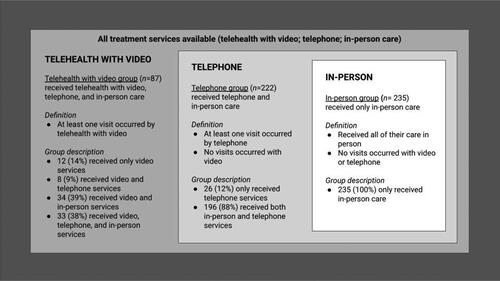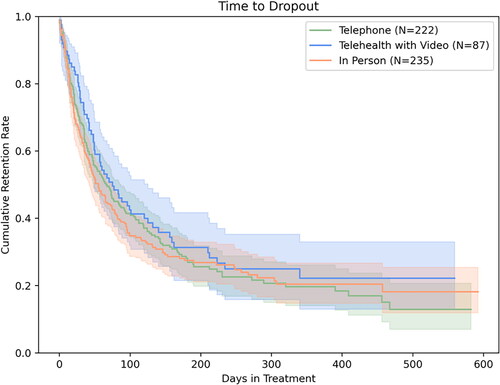Figures & data
Figure 1. Modes of care: A nested model for group assignment. Note. Group assignment was made based on a nested model in the first 14 days of index date. The “in-person group” received their care solely in person. The “telephone group” received care by telephone and in-person. The “telehealth with video” group received at least one visit by telehealth with video and could also receive care by telephone and in-person.

Table 1. Characteristics of patients.
Figure 2. Kaplan-Meier estimates of time to dropout by group. Note. Unadjusted Kaplan-Meier survival curves presented as rate of retention (no dropout) plotted against time until dropout in days. Blue line signifies patients who had at least one remote telehealth with video visit, green line signifies patients who used telephone but no telehealth with video, and the orange line signifies those who had solely in person visits within the first 14 days from the diagnostic evaluation. Dropout rates at 30, 90, and 180 days for the telehealth with video group were 26, 55 and 69%, respectively, while dropout rates for the telephone group were 32, 57, and 72%, respectively, and 36, 61, and 73%, respectively, for the in-person group.

Table 2. Cox proportional hazards regression model of time to dropout.
Table 3. Factors associated with treatment engagement.
Table A1. Distribution of appointment types during the 14-day run-in period by group.
